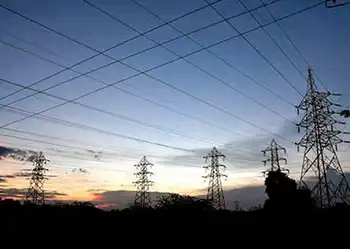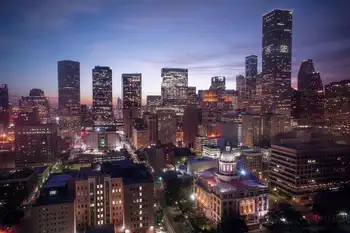33 per cent renewable bill in sight
SACRAMENTO, CALIFORNIA - As the final days of the 2010 legislative session wind down in Sacramento, a Silicon Valley lawmaker is pushing to give California the most far-reaching mandate for renewable energy in the United States.
But there's more to it than putting up some wind turbines and solar farms. The lofty goal is struggling through a complex tangle of utilities, labor unions, environmental groups and green energy companies — each concerned about everything from the price of your monthly PG&E bill to the number of jobs the measure might, or might not, create.
"It is an extraordinarily complex task," said State Sen. Joe Simitian, D-Palo Alto, "both in respect to the issue itself and the politics surrounding it."
The showdown over Simitian's bill, SB 722, could come to a vote early. The bill would require California's utilities to produce 33 percent of their electricity from renewable sources by 2020.
"It is our top priority this year," said Jim Metropulos, with Sierra Club California. "We believe we need to foster more renewable energy development and retire inefficient fossil fuel plants."
Three years ago, Simitian wrote a law, signed by Gov. Arnold Schwarzenegger, that required a 20 percent renewable electricity standard by December 31 of this year. That target is close to being met. The state's utilities are on pace to hit 18 percent this year and 21 percent by the end of next year.
But getting to 33 percent is a much steeper climb.
California consumes massive amounts of electricity. One of every two people in the United States who lives west of the Mississippi River lives in California. And there are more people, 40 million, in California than in Canada.
Only about three-quarters of the electricity that California consumes is generated within the state. The rest is imported, from sources ranging from large hydroelectric dams in the Pacific Northwest to coal-fired power plants in New Mexico and Arizona.
Now, with the Legislature set to adjourn, a key point of contention surrounding Simitian's bill is how much renewable electricity imported from out-of-state can count toward California's 33 percent target.
Labor unions want most of the electricity to be generated in California, since that would mean dozens of large construction projects for new wind turbines, solar farms, geothermal plants and other types of green energy.
"If you do all of your renewables from purchase agreements in places like Wyoming it doesn't do anything to clean California's air or create jobs in California," said Scott Wetch, a lobbyist who represents the International Brotherhood of Electrical Workers, along with plumbers, pipe fitters and utilities workers unions.
On the other side are utilities, and Gov. Schwarzenegger, who want more out-of-state power to count. That way, they say, there will be more competition and available electricity, which should keep prices down.
"It is absolutely imperative that the state pursue its renewable energy goals in a way that is most cost-effective for our customers, especially in light of the challenge California is facing in the recession," said Cindy Pollard, a spokeswoman for PG&E, which is opposing the bill.
Last year, lawmakers passed a similar bill by Simitian, but Schwarzenegger vetoed it.
He said then that California needs "a regional approach" and that Simitian's bill violated the U.S. Constitution's commerce clause by putting too many limits on the sale of energy across state lines. Instead, Schwarzenegger signed an executive order setting 33 percent as the state policy, but that could be overturned by any future governor.
Simitian went back to the drawing board.
The new bill, which is still undergoing changes as it bounces around from committee to committee, is expected to come up for its next vote. It would generally require 75 percent of the renewable energy to be generated in California, but would allow more out-of-state generation if the renewable power plants were directly connected to California's power grid, rather than having them feed electricity into a wider Western grid where those specific "green" electrons might never make it to California.
Carl Guardino, CEO of the Silicon Valley Leadership Group, which represents more than 300 companies, said his organization, which is currently neutral on the bill, supports a target closer to 50 percent in-state generation. The governor, with whom he has met on the issue, agrees, he said.
Schwarzenegger also has said he wants rules to streamline construction of solar and wind farms in California. Democratic leaders are working on a separate bill as part of a compromise.
Overlying the whole saga is the November election. On the ballot is Proposition 23, a measure funded largely by two Texas oil companies that would suspend California's primary global warming law and Schwarzenegger's 33 percent renewable energy executive order. And voters will choose a new governor.
Guardino says Silicon Valley companies support mandates for more renewable electricity but want to make sure lawmakers don't inadvertently spike prices.
"They are at the five-yard line and the clock is running out," said Guardino. "We want to help them get this across the goal line, because we're not sure who the next quarterback will be and whether they'll be as bold."
Related News

Europeans push back from Russian oil and gas
BERLIN - Europe is producing all-time highs of wind and solar energy as the 27-country group works to reduce its reliance on fossil fuels from Russia.
Four months after Vladimir Putin’s full-scale invasion of Ukraine in February 2022, the European Commission launched REPowerEU. This campaign aims to:
- Boost the use of renewable energy.
- Reduce overall energy consumption.
- Diversify energy sources.
EU countries were already moving toward renewable energy, but Russia’s war against Ukraine accelerated that trend. In 2022, for the first time, wind and solar power surpassed gas as a source of electricity. Wind and solar provided a record-breaking 22% of EU countries’ electrical supply,…




